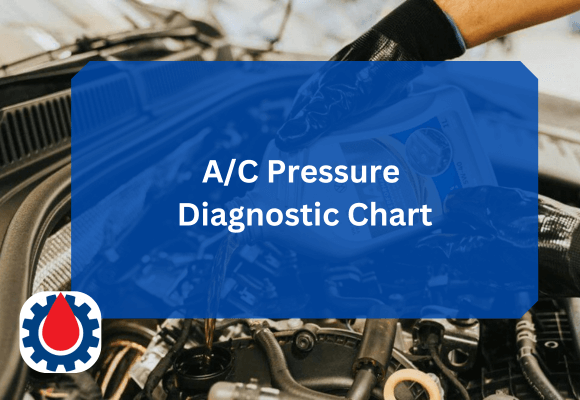When your car’s air conditioning (A/C) system isn’t cooling as expected, the first step in diagnosing the issue involves checking both low-side and high-side pressures using a manifold gauge set. These readings provide insights into refrigerant charge levels, compressor health, and potential blockages.
Below is a detailed A/C Pressure Diagnostic Chart designed to help you identify and fix common A/C system issues.
A/C Pressure Diagnostic Chart
| Condition | Low Side Pressure (PSI) | High Side Pressure (PSI) | Possible Cause | Recommended Solution |
|---|---|---|---|---|
| Normal Operation (R-134a) | 25–35 | 200–250 | System performing correctly | No repair needed |
| Normal Operation (R-1234yf) | 20–30 | 170–210 | System working properly | No repair needed |
| Low Refrigerant Charge | 0–20 | Below 150 | Refrigerant leak or undercharge | Check for leaks, recharge system |
| Empty System | 0 | 0 | Severe leak or no refrigerant | Repair leaks, vacuum, recharge |
| Overcharged System | Above 50 | Above 300 | Too much refrigerant or trapped air | Recover, evacuate, recharge properly |
| Compressor Not Engaging | 0–10 | 0–10 | Electrical fault, relay issue, or low pressure | Inspect relay, clutch, and wiring |
| Clogged Expansion Valve/Orifice Tube | 0–10 | 250–350 | Restriction in refrigerant flow | Replace expansion valve/orifice tube |
| Bad Compressor (No Pressure Difference) | 80–100 | 80–100 | Compressor failure or internal damage | Replace compressor |
| Condenser Fan Not Working | 25–35 | Above 300 | Fan or relay issue | Check fan motor and fuse |
| Moisture in System | Fluctuating | Fluctuating | Moisture freezing in system | Replace receiver-drier, vacuum system |
| Air in System | 25–35 | Above 300 | Air not evacuated during service | Recover and recharge system properly |
| Blocked Condenser | 25–35 | Above 325 | Debris blocking airflow | Clean or replace condenser |
| Weak Compressor | 10–20 | Below 150 | Compressor wear or damage | Replace compressor |
| Stuck Expansion Valve (Closed) | Below 10 | Above 300 | Restricted refrigerant flow | Replace valve |
| Stuck Expansion Valve (Open) | Above 45 | Below 150 | Excess refrigerant flow | Replace valve |
| High Ambient Temp (90–100°F) | 30–40 | 250–300 | Normal in hot weather | Ensure condenser cooling is sufficient |
| Low Ambient Temp (Below 70°F) | 15–25 | 150–200 | Normal in cool weather | No action needed |
| Restricted Receiver-Drier | 10–15 | 250–300 | Internal blockage | Replace receiver-drier |
| Refrigerant Type Mismatch | Variable | Variable | Mixed refrigerant types | Recover, flush, recharge correctly |
| Evaporator Freeze-Up | 0–15 | 150–200 | Moisture or thermostat fault | Check thermostat and moisture levels |
| Defective Pressure Switch | 0–10 | 0–10 | Faulty switch not allowing operation | Replace pressure switch |
| Overheated Engine | 25–35 | Above 300 | Cooling system issue | Check radiator and fans |
| Leaking Schrader Valve | Slow drop | Slow drop | Valve core leak | Replace Schrader valve core |
Related AC System Pressure Chart(For All Refrigerant Types)
How to Use the A/C Pressure Chart
- Connect the Gauges: Attach the blue hose to the low-pressure port and red hose to the high-pressure port.
- Run the Engine: Turn on the car, set A/C to MAX COOL, and observe both gauge readings.
- Compare to the Chart: Match your readings to the chart to determine the condition.
- Diagnose the Issue: Identify whether it’s a low charge, overcharge, blockage, or compressor fault.
- Repair and Recharge: Fix leaks, clean components, and recharge with the proper refrigerant type and amount.
Related Car AC Gauge Reading Chart(Complete Guide)
Tips for Accurate Pressure Diagnosis
- Always check the ambient temperature before comparing readings.
- Use the correct refrigerant type (R-134a or R-1234yf).
- Vacuum the system for at least 30 minutes before recharging.
- Check for leaks and oil stains near fittings and hoses.
- Replace the receiver-drier or accumulator after any major repair.
- Avoid overcharging, it causes high pressure and system strain.
FAQs
What are normal AC pressures?
Normal A/C pressure readings depend on the refrigerant type and ambient temperature. For most R-134a systems, the low-side pressure should read between 25–35 PSI, while the high-side pressure should range from 200–250 PSI under normal operation. For R-1234yf systems, expect slightly lower readings (low side 20–30 PSI, high side 170–210 PSI).
How to read an AC pressure gauge?
Attach the blue gauge to the low-pressure port and the red gauge to the high-pressure port. Start the engine and turn on the A/C at maximum cooling. The low-side gauge indicates the suction pressure entering the compressor, while the high-side gauge shows the discharge pressure from the compressor. Compare both readings to the diagnostic chart to identify any irregularities.
Related Normal Oil Pressure for Diesel Engines(Norma Pressure Range)
What AC pressures indicate a problem?
- Low both sides: System undercharged or empty.
- High both sides: Overcharge, air contamination, or a bad compressor.
- Low low-side / high high-side: Blockage or restriction (e.g., orifice tube or expansion valve).
- High low-side / low high-side: Weak compressor or expansion valve stuck open.
How to read a refrigerant pressure chart?
A refrigerant pressure chart lists the expected pressure readings for a given ambient temperature. To use it, locate your current outside air temperature, then match it to the corresponding low- and high-side pressures for your refrigerant type. This helps verify if your system is within the proper range or needs service.
What happens if your AC pressure is too high?
Excessive A/C pressure can cause the compressor to overheat, the refrigerant to expand excessively, and even trigger the system’s high-pressure cutoff switch. Prolonged high pressure may lead to compressor damage, leaks, or burst hoses. The fix usually involves recovering excess refrigerant, cleaning the condenser, or replacing a blocked component.
Related Low Engine Oil Pressure(8 Common Causes & Solutions)
What should the high and low side pressures be for R134a?
For R-134a systems at 85°F ambient temperature, the low side should typically be around 25–35 PSI, and the high side should be between 200–250 PSI. At higher temperatures (95–100°F), the high side can reach up to 275–300 PSI. Always compare readings with temperature-adjusted pressure charts for the most accurate results.




